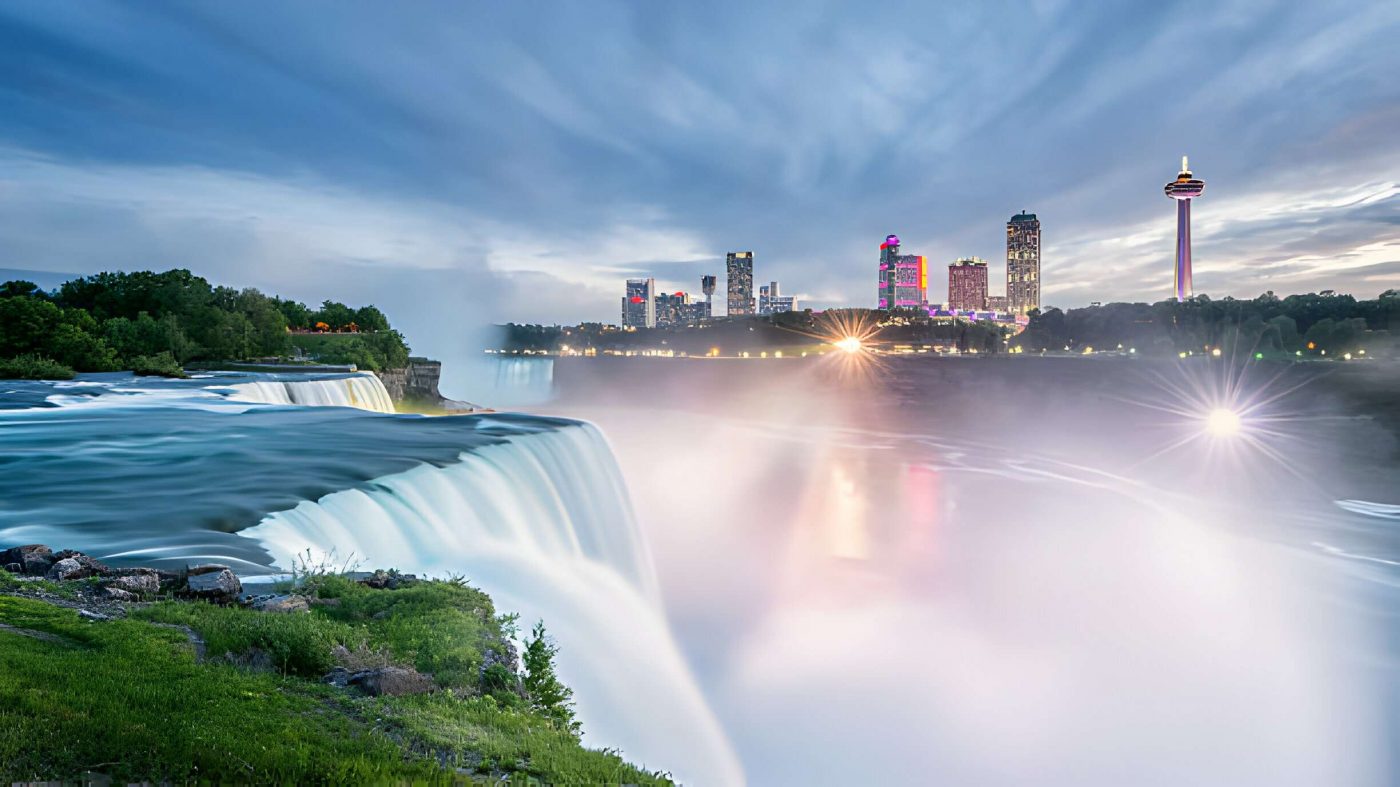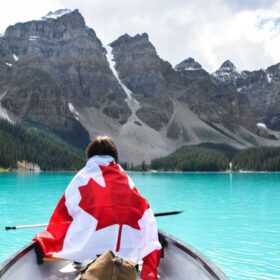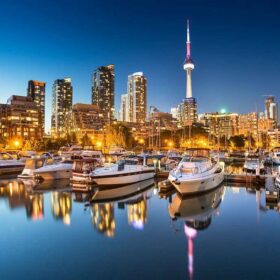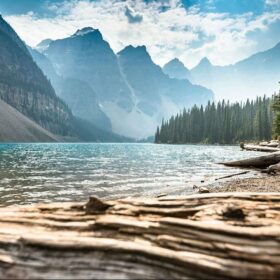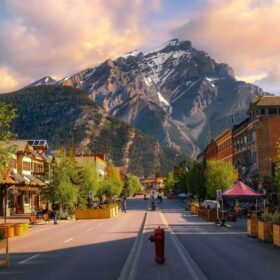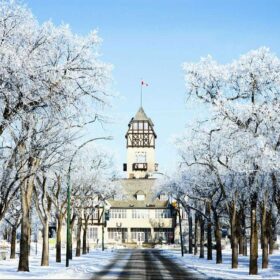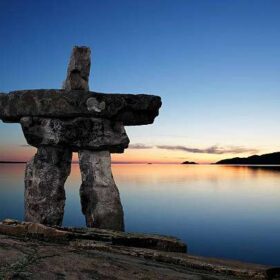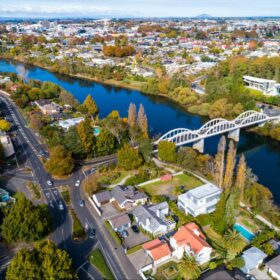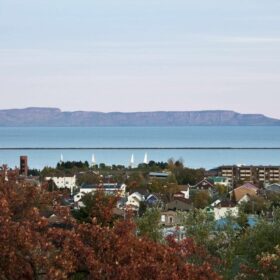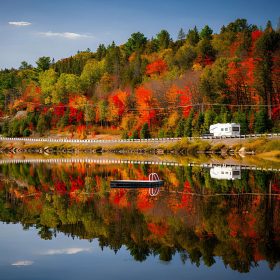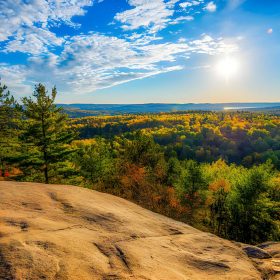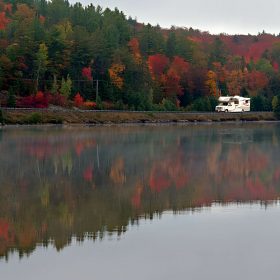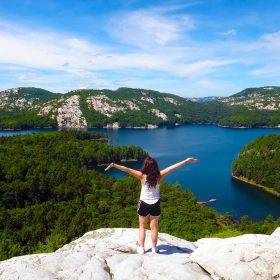What is it about waterfalls that captivates us so profoundly? There is a mesmerizing quality in observing water cascade endlessly over rocks. If you are the type of person who could happily spend hours watching the graceful descent of water, then you’ll undoubtedly be drawn to these top waterfalls in Canada.
Here is a fascinating fact: Canada boasts over 1,700 named waterfalls, and there is likely many more awaiting official recognition. With such abundance, singling out the very best was no easy task. Nevertheless, we believe you’ll concur that the ones featured in this list are exceptionally unique.
Among them, some waterfalls reach incredible heights, while others release an unimaginable volume of water. Some are nestled in pristine wilderness, creating a magical backdrop that might make you question if it’s all too good to be true. But no, it’s not a dream – it’s the authentic Canadian experience.
While a few of these waterfalls can be admired from the comfort of a car window, others will beckon you to embark on a hike, sometimes spanning several days. Some trails lead you to the base of the falls, providing an up-close encounter, while in other instances, you’ll marvel at the view from the crest. One legendary waterfall offers access behind the cascading water, while another allows you to traverse it via a suspension bridge.
Without further delay, explore our compilation of the best waterfalls in Canada.
1. Niagara Falls
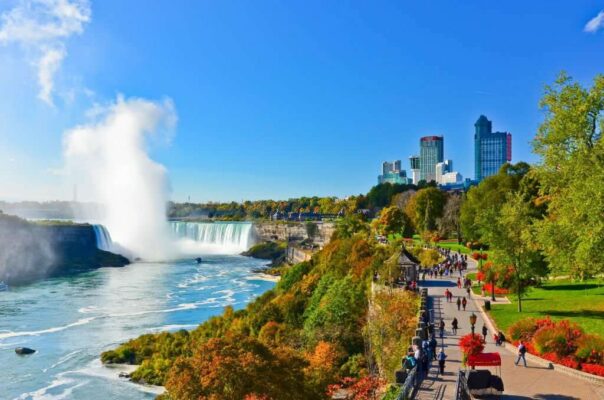
2. Pissing Mare Falls

Certainly, while the name may not evoke the most charming imagery, Pissing Mare Falls (also known as Cascade Pissing Mare) is undeniably one of the most picturesque waterfalls in the country.
Even if the name doesn’t immediately resonate, you’ve likely encountered these falls in photographs capturing the iconic fjord at Western Brook Pond in Newfoundland’s Gros Morne National Park.
What enhances the splendor of Pissing Mare Falls is its lush, rugged natural setting. Interestingly, these same characteristics also make access a bit challenging. The most convenient way to witness them up close is by booking a boat tour through the fjord. However, keep in mind that boat tours are seasonal and contingent on favorable weather conditions. Additionally, it’s worth noting that reaching the boat requires about a half-hour walk along a well-maintained trail.
As Pissing Mare is glacier-fed, the optimal time for viewing is in the spring. During the peak summer tourist season, the water volume may not be as awe-inspiring.
3. Shannon Falls
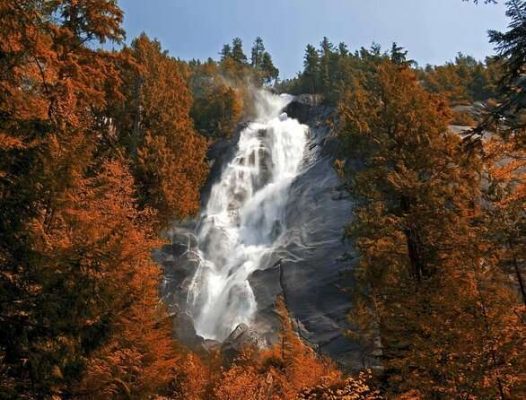
Shannon Falls is a convenient day trip from Vancouver and makes a nice stop if you are on your way to do some sightseeing in Whistler.
There are three distinct ways to encounter British Columbia’s Shannon Falls — three tiers, so to speak.
At the first level, you can admire the 335-meter-high waterfall from the Sea to Sky Highway. As you head north from Vancouver toward Whistler (or beyond), keep your gaze on the right-hand side of the road to catch sight of Shannon Falls, particularly as you approach Squamish.
The second level involves pulling over at Shannon Falls Provincial Park, conveniently located right off the highway. Follow the boardwalk for a closer view of the falls. The park offers trails to explore and picnic tables by the falls, providing views unmatched by any restaurant.
For those seeking an even more immersive experience, consider level three: the hike to Upper Shannon Falls. While it involves a heart-thumping climb, you’ll gain access to sections of the falls that are not visible from below. Although the pools of water along the way may appear tempting, especially if you’ve worked up a sweat, swimming is strongly discouraged due to extreme danger, and unfortunately, fatalities have occurred in the past.
4. Helmcken Falls

Nestled in the Cariboo Mountains of British Columbia, Helmcken Falls stands as one of Canada’s most remarkable waterfalls, where water cascades over a hollowed-out cliff. While photographs capture the falls’ beauty, the true drama of Helmcken Falls is challenging to convey in two dimensions.
Accessing the falls from the main road is incredibly convenient, with a well-positioned viewing platform providing the perfect vantage point. For a different perspective, consider continuing the eight-kilometer (round trip) Rim Trail.
Arthur Wellesley Gray deserves credit for granting access to Helmcken Falls; he played a crucial role in the creation of Wells Gray Provincial Park, primarily to safeguard Helmcken Falls. Today, as Canada’s fourth-highest falls, Helmcken remains the park’s most popular attraction.
While spring typically offers optimal waterfall viewing, winter presents a unique spectacle at Helmcken Falls. Phenomenal ice formations create a visually striking effect around the waterfall, juxtaposed with the fast-moving water within. Witnessing the contrast between the rushing falls and the ice cone is truly captivating.
5. Della Falls
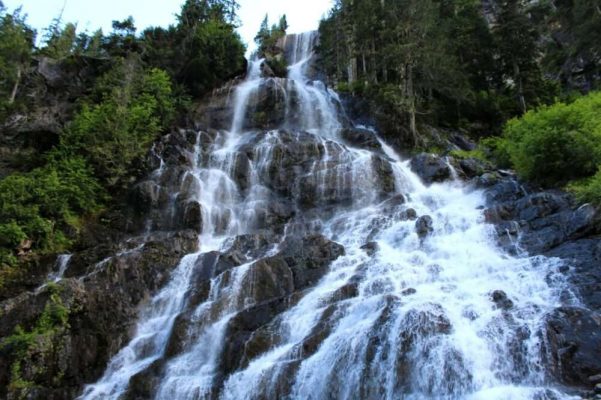
Prepare yourself for the staggering height of Della Falls, the highest waterfall in Canada, boasting a remarkable 440-meter (1,440-foot) drop. Situated on Vancouver Island, Della Falls is undeniably spectacular but poses a challenge to access.
To embark on this adventure, start by heading to Strathcona Provincial Park and reaching Great Central Lake. From there, you must traverse approximately 33 kilometers to reach the trailhead. You have the option to book a water taxi for an easier journey or paddle across using a canoe or kayak for a more budget-friendly alternative. Note that there is a designated rack for storing canoes and kayaks at the trailhead.
Once you’re set for the hike, be prepared! The trail is 29 kilometers in length (or more if you explore additional side trips along the way), catering to experienced and adventurous hikers. Most people take three days to complete the hike, necessitating careful planning for gear and provisions.
Except for booking and paying for the water taxi, no reservations or permits are required for this excursion. However, the optimal time to visit the falls is in July when the glacial runoff is at its peak, showcasing Della Falls in all its splendor.
6. Virginia Falls
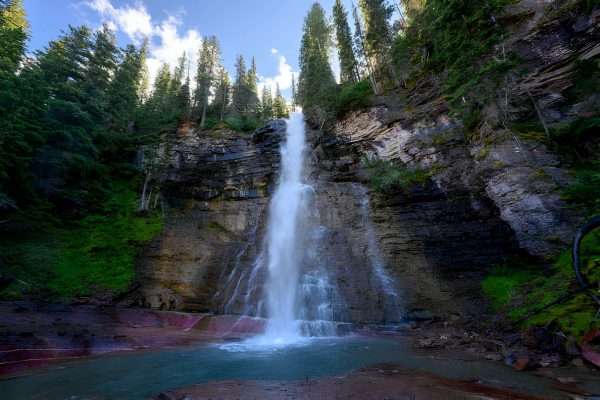
When it comes to majestic Canadian waterfalls, Niagara Falls may claim much of the fame and glory, but Virginia Falls stands twice as tall. It boasts the same awe-inspiring single-drop style, maintaining a consistent flow straight over the edge without leaping around or changing direction.
Access to Virginia Falls, however, presents a bit of a challenge. To reach this natural wonder, you must head north—way North—to Nahanni National Park Reserve in the Northwest Territories.
The most coveted view of Virginia Falls awaits daring adventurers willing to paddle or raft the Nahanni River. This is the only means to reach the falls’ base and truly grasp its impressive height. If you are hesitant to commit to such an extreme adventure, an alternative is booking a float plane tour. This offers an equally unforgettable perspective from the sky.
7. Kakabeka Falls
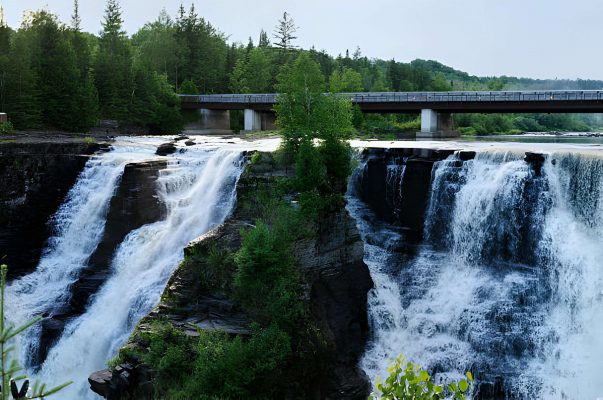
Just west of Thunder Bay, Ontario, lies the breathtaking Kakabeka Falls, plummeting 40 meters into a gorge in Kakabeka Falls Provincial Park. Referred to as the “Niagara of the North,” Kakabeka Falls holds the distinction of being the second-highest waterfall in the province. In contrast to Niagara Falls, these cascades exude a more natural and less touristy ambiance.
The spectacle of water flowing and bouncing in every direction makes witnessing Kakabeka Falls in person truly astonishing. Conveniently accessible from the highway, you can make a brief stop, but we recommend dedicating a couple of hours to thoroughly appreciate the experience.
For the optimal view of the falls, follow the boardwalk trail that meanders around the upper section of the waterfall. The gorge below is an ecologically sensitive area constantly undergoing erosion, so resist the temptation to wander to the bottom of the falls, as it is expressly prohibited.
8. Montmorency Falls
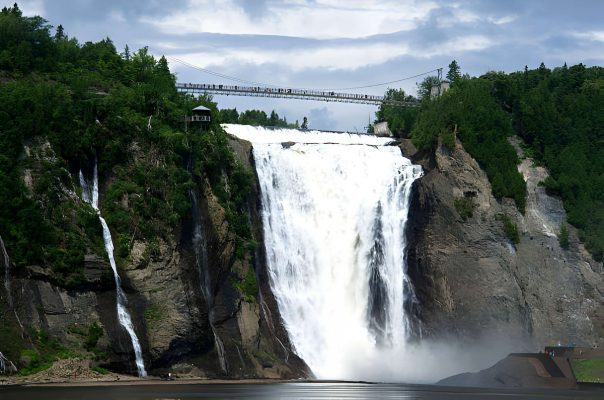
More commonly known as the Chute-Montmorency, Quebec’s Montmorency Falls is so grand that it boasts its park, the Montmorency Falls Park. This 83-meter waterfall is fueled by the Montmorency River, cascading into the Saint Lawrence River below.
Access to these falls could not be more convenient. The park features impressive amenities for capturing views from every perspective. A wooden staircase traces the falls with multiple viewpoints along the way, while a suspension bridge extends across the top of the waterfalls. Additionally, you can take a cable car from the bottom of the waterfall up to its crest.
And here’s something fascinating: a Via Ferrata right by the falls allows you to get up close and personal, and there’s also a zipline that zooms close enough to the water to let you feel the mist on your face. If you’ve ever desired to engage with a waterfall, Montmorency Falls provides some incredibly enjoyable ways to do so.
9. Devil’s Punchbowl
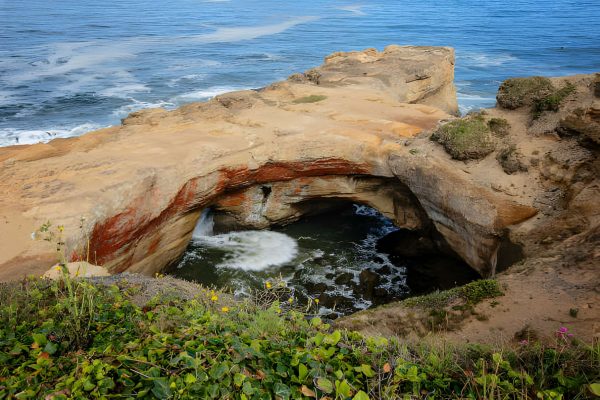
Niagara Falls is the most renowned among the waterfalls cascading over the Niagara Escarpment, but one that often goes unnoticed and deserves attention is the Devil’s Punchbowl. The slender cascade of water descending nearly 34 meters off the rock’s edge and then plunging into a circular depression is truly captivating.
The exposed rock displays a variety of colors, creating excellent photo opportunities. Fortunately, the Conservation Area has strategically positioned lookout points in ideal locations. While the temptation to visit the base of the falls may arise, this is strictly prohibited.
This waterfall and gorge are also a prime location for birdwatchers. The updrafts from the waterfall attract raptors that enjoy soaring in this area.
Situated near Stoney Creek in the Devil’s Punchbowl Conservation Area, the waterfall is free to visit, though a parking fee is charged.
10. Athabasca Falls
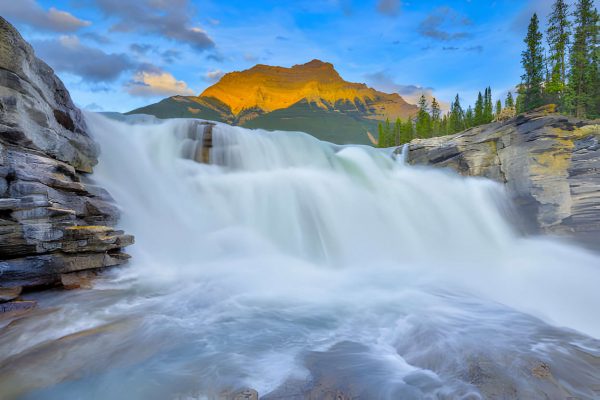
Standing before Athabasca Falls in Jasper National Park, you are likely to ponder one question: “Where does all that water come from?”
The sheer volume of water pouring out of Athabasca Falls is staggering and is what distinguishes it from other magnificent waterfalls on this list. At a modest 23 meters in height, Athabasca Falls may not be the tallest waterfall by any means, but the immense amount of water continuously cascading from it is truly unreal.
While many waterfalls dwindle to a trickle outside of spring, Athabasca Falls defies this trend. Thanks to the mighty Athabasca River, the falls maintain a steady flow throughout the year.
Accessing the falls is a breeze through a short trail that spans just under one kilometer. The path is straightforward, paved, and generally well-maintained. The drawback of Athabasca Falls’ easy accessibility is that it tends to draw crowds in the summer months when tourist activity is at its peak. To avoid the crowds, consider arriving early or visiting during the off-season.
11. Bow Falls
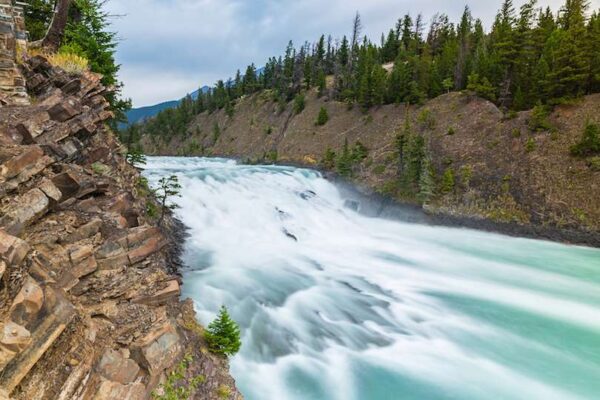
The Rocky Mountains boast some of the finest waterfalls in Canada, and Bow Falls stands out among them. Those who selected the site for the grand Fairmont Banff Springs hotel likely recognized the appeal of having this magnificent cascade within walking distance.
Bow Falls is conveniently reachable from the town of Banff, whether by private car or public transport. Walking trails along the river’s edge bring you relatively close to the falls, and adjacent benches and picnic tables offer perfect spots to relax and appreciate the view.
While the falls’ vertical drop may not be extraordinarily high at nine meters (30 feet), it is impressive width at 37 meters (120 feet) and the sheer volume of water thundering through it makes Bow Falls noteworthy.
12. Rainbow Falls
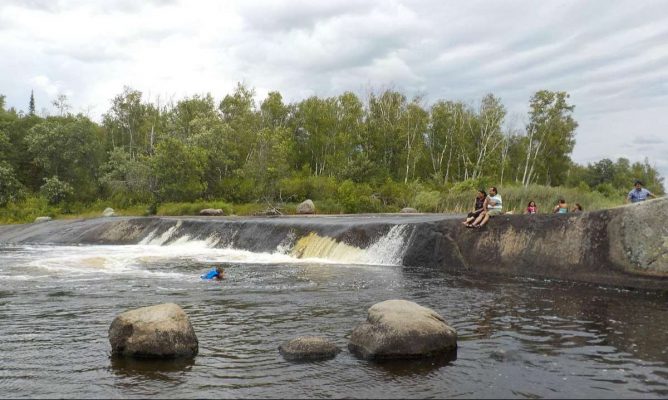
When it comes to waterfalls in Manitoba, many associate the province solely with prairies, but it also boasts extensive areas of boreal forest, complete with lakes, rivers, and waterfalls.
One of Canada’s more distinctive waterfalls is the inviting rush of warm water near White Lake in Manitoba. Rainbow Falls has been a summertime favorite for campers and visitors to Whiteshell Provincial Park, considered one of the premier parks in Manitoba.
What makes Rainbow Falls special is its suitability for swimming. The 2.5-meter-high drop is ideal for jumping into the relatively deep pool below. During the summer, the water is generally safe for anyone with decent swimming skills. However, some parents opt to put life jackets on their children, just to be cautious. In spring, the flow might be too strong for this activity. If you’re uncertain about jumping and swimming here, feel free to ask someone already in the water for guidance.
FAQs
Q: Are these waterfalls easily accessible to tourists?
A: Most of the featured waterfalls are accessible to tourists, with varying levels of difficulty in reaching them. Check local guides for specific details.
Q: Are there any guided tours available for these waterfalls?
A: Yes, many tour operators offer guided tours to these waterfalls, providing insights into their history and geological features.
Q: What is the best time to visit these waterfalls?
A: The best time to visit depends on the waterfall and its location. Research the specific seasons and weather conditions that suit your preferences.
Q: Are there accommodations near these waterfalls?
A: Many of the waterfalls have nearby accommodations, ranging from campgrounds to luxury hotels. Plan your stay based on the desired level of comfort.
Q: Do these waterfalls freeze during winter?
A: Some waterfalls, especially in colder regions, may partially freeze during winter, creating a unique and mesmerizing sight. Check seasonal conditions before planning a winter visit.


Bạn không ngờ chúng tôi sẽ tổng hợp danh sách các thác nước ấn tượng nhất Canada mà không ghi công xứng đáng cho Thác Niagara, phải không?

